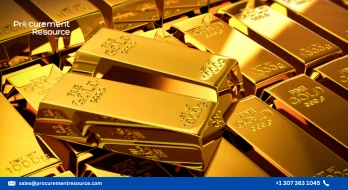Rise in Gold Rates Exceeded the Risks of Inflation in 2021

The price of gold closed the year at USD 1,806 per ounce, down around 4% from the previous year's close. The gold price rose by the end of the year after the fast-spreading Omicron variation, which presumably spurred flight-to-quality movements, although it was not enough to reverse the H1 loss.
When newly developed immunisations were released in early 2021, investor excitement likely caused a drop in portfolio hedges. As a result, gold's performance was harmed, and gold ETF outflows occurred. The remaining year was consumed by a struggle between rival factions. Ambiguity about future versions, blended with growing concerns about chronically high inflation and a resurgence in gold consumer demand, drove gold prices higher.
As on December 31, 2021, the short-term model is a numerous relapse model of monthly gold price returns. This is divide into four categories: economic expansion, market risk, opportunity cost, and momentum. These themes encapsulate the motivations driving gold demand, most notably investment demand, which is thought to be the short-term marginal driver of gold price returns.
According to the predictions, the Fed will raise three times this year, faster than previously projected, while attempting to shrink the size of its balance sheet. However, examining previous tightening cycles reveals that the Fed has a history of not drawing monetary policy as vigorously as committee members had anticipated.
However, as shown in bond rates, gold price performance has historically been influenced by financial market expectations of future monetary policy initiatives. As a result, gold has historically underperformed in the months leading up to a Fed rate hike before outperforming significantly in the months following the first hike. Gold may have been supported by the US dollar, which followed the opposite pattern. Finally, US equities enjoyed their highest performance before a tightening cycle, but subsequent returns were lower.
Finally, while the relationship between gold and the U. S. interest rates is widely discussed, gold is a global market. Not every central bank is as quick as the Federal Reserve. The European Central Bank has warned that hiking interest rates in 2022, The Bank of England hiked interest rates in December, but the Policy Committee indicated that future hikes would be gradual. To improve and prolong economic recovery while limiting COVID's impact, the Reserve Bank of India has stated that it will maintain its supportive monetary policy stance.
Many central banks initially downplayed inflation fears, and while others, such as the Federal Reserve, have acknowledged upside risks, there is a general belief that inflation will subside. Investors appear to be less confident, although perspectives differ. These sentiments were reflected anecdotally in a LinkedIn poll we ran last December. While most respondents predicted inflation to continue high, more than one-quarter believed it would decrease.
Residual supply-chain disruptions from the first COVID-19 wave and subsequent dislocations when new versions arise tight labour markets, which, combined with COVID-19 weariness, have boosted the number of workers looking for new better-paying jobs. From 2020, average savings will be more significant, contributing to high valuations in various financial markets. Commodities prices are high. Gold has historically performed well when inflation is high. When inflation was more significant than 3%, gold's price increased by an average of 14%. Furthermore, gold has outpaced US inflation throughout time and has gotten closer to the money supply, which has exploded in recent years.



.webp)